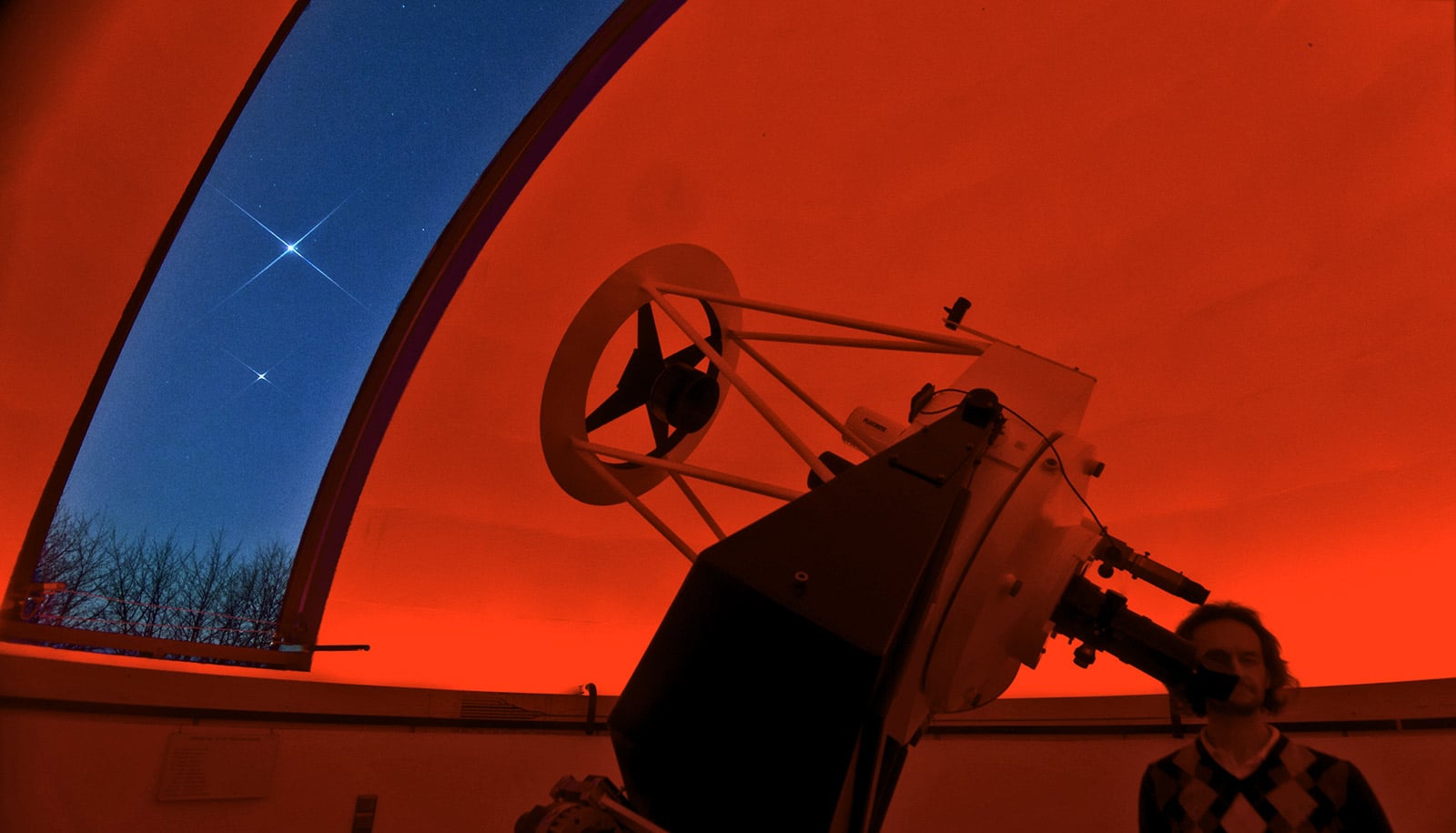Using a statistical comparative approach may make finding habitable, Earth-like planets or alien life more efficient, a team of astronomers suggests in a new paper.
“The nature of proof should not be: ‘Can we point at a planet and say, yes or no, that’s the planet hosting alien life,” says Jacob Bean, associate professor of astronomy and astrophysics at University of Chicago.
“It’s a statistical exercise,” Bean says. “What can we say for an ensemble of planets about the frequency of the existence of habitable environments, or the frequency of the existence of life on those planets?”
“Nature has provided us with huge numbers of planetary systems…”
The standard approach of researching exoplanets, or planets that orbit distant stars, has entailed studying small numbers of objects to determine if they have the right gases in the appropriate quantities and ratios to indicate the existence of life. But in a recent paper with coauthors Dorian Abbot and Eliza Kempton, Bean describes the need “to think about the techniques and approaches of astronomy in this game—not as planetary scientists studying exoplanets.”
“Nature has provided us with huge numbers of planetary systems,” says Kempton, an assistant professor of physics at Grinnell College. “If we survey a large number of planets with less detailed measurements, we can still get a statistical sense for how prevalent habitable environments are in our galaxy. This would give us a basis for future, more detailed surveys.”
Kempton and Bean attest to the challenges of making detailed observations of a potentially Earth-like planet. Together they have previously studied the super-Earth known as GJ 1214b, an exoplanet with a mass greater than Earth’s but less than gas giants such as Neptune and Uranus. GJ 1214b turned out to be quite cloudy, which prevented them from determining the composition of its atmosphere.
“A large statistical study will allow us to look at many planets,” Kempton says. “If any single object proves to be particularly challenging to observe, like GJ 1214b, that won’t be a major loss to the observing program on the whole.”
Kepler changes the search
The inspiration for the paper stemmed from Bean’s membership on the Science and Technology Definition Team that is assessing the potential for a new space telescope, NASA’s proposed Large UV/Optical/Infrared Survey (LUVOIR).
One of LUVOIR’s scientific priorities is the search for Earth-like planets. During one team meeting, Bean and his colleagues listed all the properties of a potentially habitable exoplanet that they need to measure and how they would go about obtaining the data. Given the current state of technology, Bean concludes that it’s unlikely scientists will be able to confirm an individual exoplanet as suitable for life or whether life is actually there.
“Kepler completely changed the game…”
Nevertheless, astronomers have gathered an impressive haul of exoplanetary data from NASA’s Kepler space observatory, which has operated since 2009.
“Kepler completely changed the game,” Bean says. “Instead of talking about a few planets or a few tens of planets, all of a sudden we had a few thousand planet candidates. They were planet candidates because Kepler couldn’t definitely prove that the signal it was seeing was due to planets.”
The standard approach has been to take additional observations for each candidate to rule out possible false positive scenarios, or to detect the planet with a second technique.
“That’s very slow going. One planet at a time, a lot of different observations,” Bean notes. But an alternative is to make statistical calculations for the probability of false positives among these thousands of exoplanet candidates. That new approach led directly to a good understanding of the frequency of exoplanets of different sizes. For example, scientists now can say that the frequency of super-Earth-type planets is 15 percent, plus or minus 5 percent.
Signal vs. noise
Spectroscopic studies play a key role in characterizing exoplanets. This involves determining the composition of a planetary atmosphere by measuring its spectra, the distinctive radiation that gases absorb at their own particular wavelengths. Bean and his coauthors suggest focusing on what can be learned from measuring the spectra of a large ensemble of terrestrial exoplanets.
Spectroscopy may, for example, help exoplanetary researchers verify a phenomenon called the silicate weathering feedback, which acts as a planetary thermostat. Through silicate weathering, the amount of atmospheric carbon dioxide varies according to geologic processes. Volcanoes emit carbon dioxide into the atmosphere, but rain and chemical reactions that occur in rocks and sediments also remove the gas from the atmosphere.
Hunt for life on exoplanets gets new tools
Rising temperatures would put more water vapor into the atmosphere, which then rains out, increasing the amount of dissolved carbon dioxide that chemically interacts with the rocks. This loss of carbon dioxide from the atmosphere has a cooling effect. But as a planet begins to cool, rock weathering slows and the amount of carbon dioxide gradually builds from its volcanic sources, which causes rising temperatures.
Global-scale observations suggest that Earth has experienced silicate-weathering feedback. But attempts to verify that the process is operating today on the scale of individual river basins has proven difficult.
“The results are very noisy. There’s no clear signal,” Abbot says. “It would be great to have another independent confirmation from exoplanets.”
All three coauthors are interested in fleshing out the details of experiments they proposed in their paper. Abbot plans to calculate how much carbon dioxide would be necessary to keep a planet habitable at a range of stellar radiation intensities while changing various planetary parameters. He also will assess how well a future instrument would be able to measure the gas.
“Then we will put this together to see how many planets we would need to observe to detect the trend indicating a silicate-weathering feedback,” Abbot explains.
Bean and Kempton, meanwhile, are interested in detailing what a statistical census of biologically significant gases such as oxygen, carbon dioxide, and ozone could reveal about planetary habitability.
Why it’s going to be (almost) impossible to find life on exoplanets
“I’d like to get a better understanding of how some of the next-generation telescopes will be able to distinguish statistical trends that indicate habitable—or inhabited—planets,” Kempton says.
The study appears in the Astrophysical Journal Letters. The David and Lucile Packard Foundation, the National Aeronautics and Space Administration, the Research Corporation for Science Advancement, and Grinnell College’s Harris Faculty Fellowship funded the research.
Source: University of Chicago



